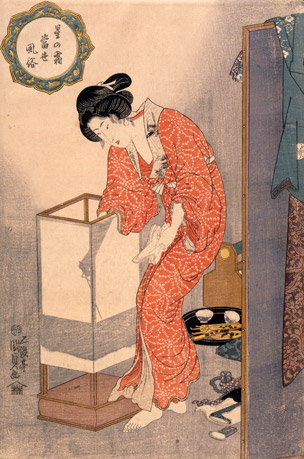Fr : version française / En: english version
The Candelabra's luster
Artificially lengthening the day is one of mankind's first victories over time. Every fuel has its specific properties and a greasy substance is the best for producing a wonderfully yellow flame. Oil, tallow, glycerin, paraffin, seal blubber and "lamp oil" have all been used to moisten lamp wicks and create light for nocturnal activities.
By My Green Candlestick!
PAPA UBU, MAMA UBU
PAPA UBU: (angry) Shitsky!
MAMA UBU: Oh! such language! Papa Ubu, thou art a big bad boy.
PAPA UBU: What stoppeth me from slaying thee, Mama Ubu?
MAMA UBU: It is not I, Papa Ubu, it is someone else who should be assassinated.
PAPA UBU: By my green candlestick, I understand not.
MAMA UBU: What, Papa Ubu, are you happy with your lot?
PAPA UBU: By my green candlestick, shitsky! my dear, verily, verily, I am happy. A man could be happy with less: captain of the Dragoons, an officer who has the confidence of King Wenceslas, decorated with the Order of the Red Eagle of Poland, and former King of Aragon, what more could you want?
MAMA UBU: What! You, who were once King of Aragon, you now think it's good enough to march in a parade at the head of forty attendants armed with cabbage-cutters? When after the crown of Aragon you could place the crown of Poland on your noggin?
PAPA UBU: Ah, Mama Ubu, I can't understand a word you say.
MAMA UBU: You're so dumb!
PAPA UBU: By my green candlestick, King Wenceslas is still very much alive; and even assuming he dies, does he not have swarms of children?
MAMA UBU: What's stopping you from massacrating the whole family and taking their place?
PAPA UBU: Ah, Mama Ubu, you are insulting me and you will soon get dumped into the lobster-pot.
MAMA UBU: Ah! miserable wretch, if I got dumped into the lobster pot, who then would mend the seat of your pants?
Excerpt from Scene I, Act I of "Ubu the King", a play in five acts by Alfred Jarry, 1888.
Translated from the French by David Ball.
Their flickering flame inspires reverie and symbolizes a divine or magical presence in many religions. It is one more miracle of fire, transforming a candle into a taper, a chandelier into a menorah and keeping a genie imprisoned in a lamp.





























